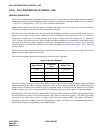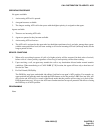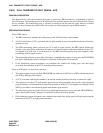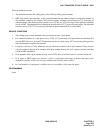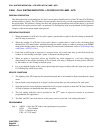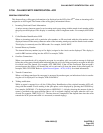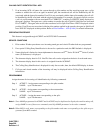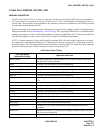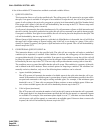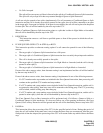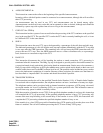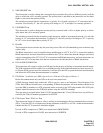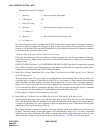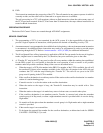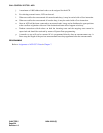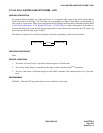
CHAPTER 5 NDA-24282 (E)
Page 228
Revision 1.0
CALL CONTROL VECTOR - ACD
A list of the available CCV instructions and their associated variables follows.
1. QUEUE TO SPLIT #n
This instruction directs a call to the specified split. The calling party will be connected to an agent within
the split, if an agent is available. If an agent is not available to accept the call, the call will be placed in a
queue of calls waiting to be serviced by an agent at a priority level determined by the Pilot Number dialed.
If the target split’s queue is full, the call will be handled by the next step in the CCV. The next step could
provide alternate routing (refer to item #4).
A call can only be queued to four splits simultaneously. If a call encounters a Queue to Split instruction and
the call is already successfully queued to four splits, the call will be connected to an agent in the target split,
if an agent is available. If an agent is not available, the call will not be placed in the queue for that split. The
call will be handled by the next step in the CCV.
When a Queue to Split instruction points to a split that is in Night Mode or is forwarded, the call will follow
the target split’s night routing of forward routing only if the call is not already in a queue. If the call is
already in a queue (or queues), the Queue to Split instruction will be ignored. The call will be handled by
the next step in the CCV.
2. CONDITIONAL QUEUE TO SPLIT #n
This instruction directs a call to the specified split. The split will not accept the call unless a predefined
condition (to be explained) is satisfied. If the condition is satisfied, the calling party will be connected to
an agent within the split, if an agent is available. If an agent is not available to accept the call, the call will
be placed in a queue of calls waiting to be serviced by an agent. If the condition is not satisfied, the call will
be handled by the next step in the CCV. The next step could provide alternate routing (refer to item #4).
The condition serves to control the traffic that the split will accept. The condition is a property of the split,
and is defined in the ACD database. There are three options for imposing a condition. The conditions are
mutually exclusive; therefore, only one of the following three conditions can be selected.
a. Agents Available [minimum]
The ACD system will ascertain the number of available agents in the split at the time the call is pre-
sented. If the number of available agents is greater than or equal to the minimum specified, the call is
accepted and connected to the longest-waiting available agent. For example, if the minimum agent
threshold is set at “3”, then calls are connected if there are three or more available agents. If there are
two or fewer available agents, the call will be handled by the next step in the CCV.
b. Calls in Queue [maximum]
The ACD system will ascertain the number of calls in the split’s queue at the time the call is presented.
If the queue depth is less than the maximum specified, the call may be queued, or connected if agents
are available. For example, if the maximum queue depth is set at “3”, and there are fewer than three
calls in queue, calls will be queued, or connected to an available agent. If there are three or more calls
in queue, the call will be handled by the next step in the CCV.



